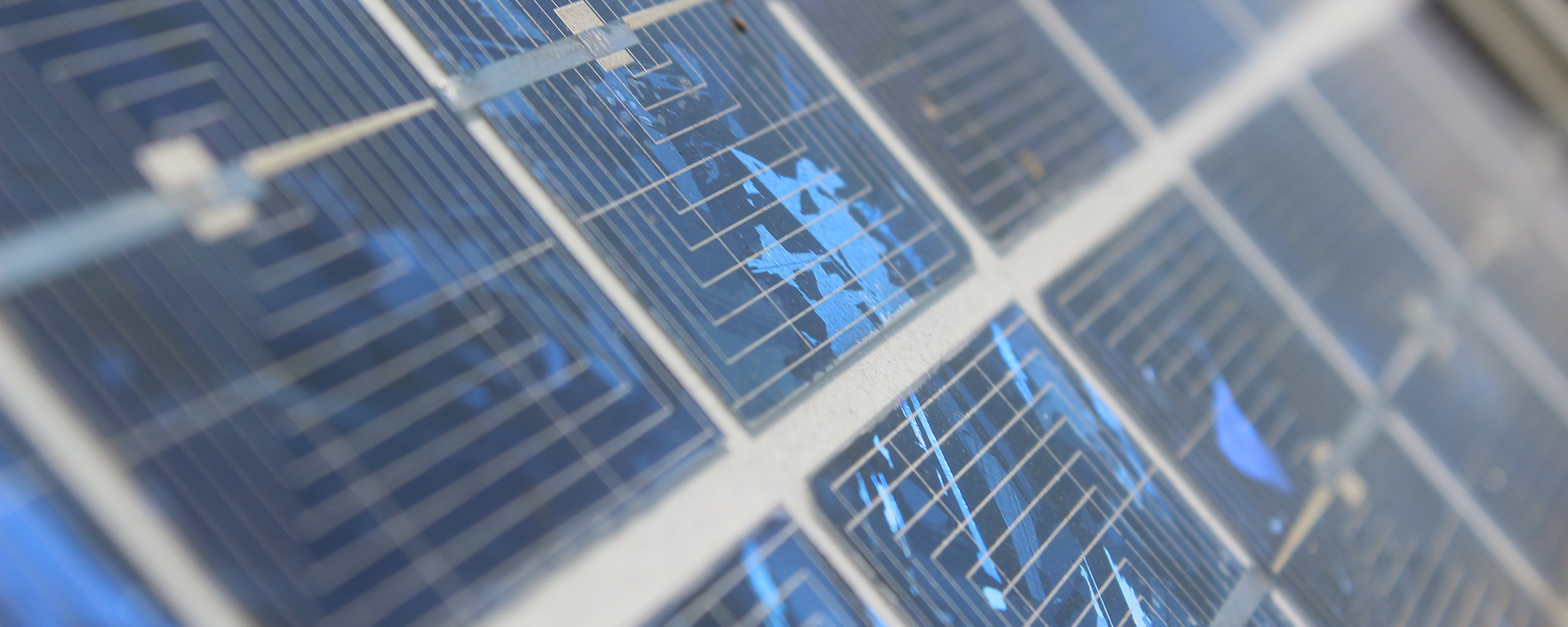Scientists Invent Solar Cell to Smooth Out Nature's Power Fluctuations

Professor Chris Groves, of our Department of Engineering, has led a national research team to design solar cells with efficiency that improves as the amount of sunlight reduces.
The need for such research
Commercial photovoltaic (PV) technology can be made and installed at a large scale, and currently is one of the cheapest renewable sources of energy. Roadmaps to achieve Net Zero anticipate that PV will grow from 3% of global electricity generation to over 20% in the next few decades.
However, current PV cells produce energy largely in proportion to the amount of sunlight. This means that energy harvested from solar panels is variable, depending on weather and time of day, and not well aligned to periods of peak electricity demand in the late afternoon. Energy networks therefore must cope with the consequences of shortfall and (sometimes) surplus of solar energy.
In times of energy shortfall, network operators must use other fuel sources such as gas and coal, which have a higher carbon intensity than solar. Surplus of solar energy can also be an issue, as it reduces the price of energy during sunny periods which makes it harder to make a profit from solar farms.
These challenges motivated the research question “can the variability in PV generation itself be minimised?”
Understanding how electrical grids can be decarbonised using Photovoltaics with Enhanced Capacity Factors
In the electrical power industry, the variability of renewable generation is quantified by the capacity factor, which is the ratio of the actual energy output to the theoretical maximum energy output over a set period. The capacity factors offered by commercial silicon PV do not compare favourably with other forms of energy generation and vary with the local climate, for example, 10% in the UK compared and 25% in California.
The research shows that it is possible to engineer a class of PV devices made from different materials that have intrinsically higher capacity factor than conventional PV technology. These devices, termed High Capacity Factor Photovoltaics (CFPV) have a power conversion efficiency (PCE) that increases as the amount of sunlight reduces, both minimising the variability in power output and maximising the power harvested for a given capacity of grid connection. In essence, CFPV is better at converting sunlight to electrical power at times when there is greater need for electricity.
Energy systems modelling at a national level demonstrate that CFPVs of this type are more effective in reducing carbon emissions than a similar capacity of silicon PVs due to the reduced need for high carbon-intensity generation, and subsequently greater revenue potential as supply better meets demand.
The authors of this paper have identified that Perovskite and Organic PVs could also be applied to this novel PV concept, thereby enabling further new applications for emerging PV technologies.
Find out more
- Read Decarbonising Electrical Grids using Photovoltaics with Enhanced Capacity Factors in Energy & Environmental Science
- See the fantastic research we do at the Durham Energy Institute
- The project was supported by the EPSRC Centre for Doctoral Training in Renewable Energy Northeast Universities , a partnership between Durham, Newcastle and Northumbria universities to train the next generation of engineers and scientists to deliver Net Zero.
- Our Department of Engineering offers a wide range of Engineering pathways, is recognised as ones of the leading centres of research in Engineering in the world and is ranked 5th in The Complete University Guide 2023. Students benefit from excellent employment opportunities as well as interdisciplinary research and national and international cooperation. Feeling inspired? Visit our Engineering webpages to learn more about our postgraduate and undergraduate programmes.


/prod01/prodbucket01/media/durham-university/research-/research-institutes/durham-energy-institute/landscapes-cityscapes-montages-etc/Walney-sunset-2000X800.jpg)